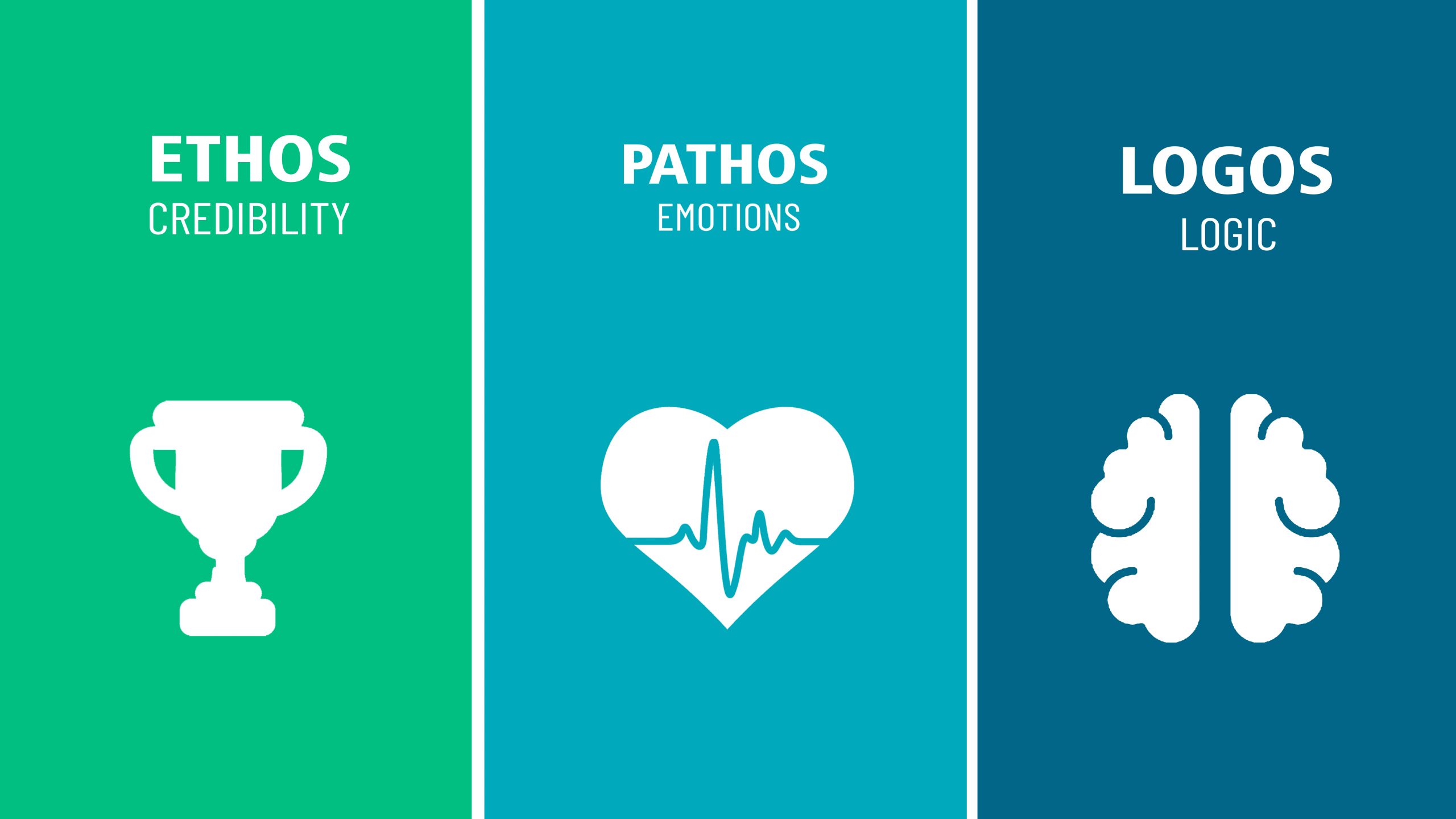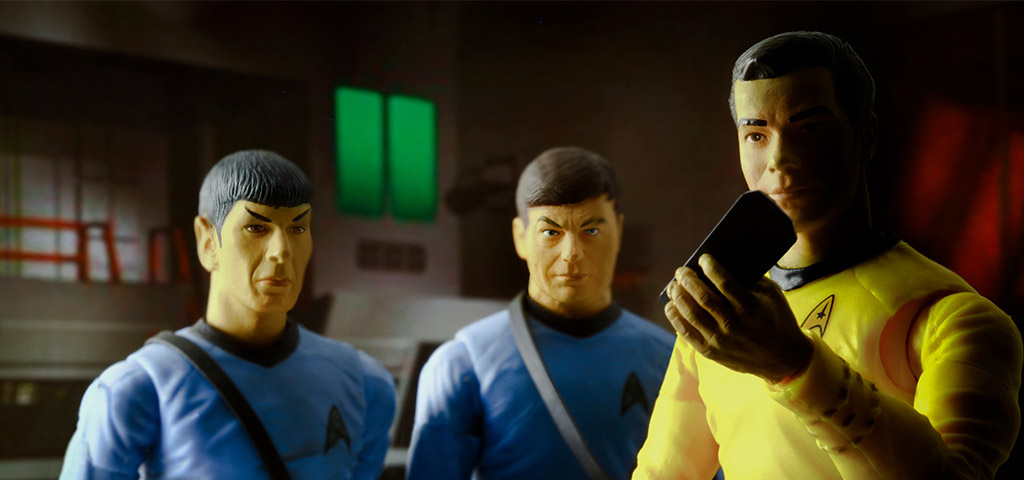Bear with me.
Many agencies who’ve just won a pitch ask, “Why us?” Answers vary in the specifics, but it’s always a combination of the solution, the expertise to back it up, and chemistry, which includes both passion for the opportunity and “something new,” which I will and won’t define by the end of this post. We’ll get to Star Trek momentarily.
I’ll note here that I’ve been on a personal journey to watch every single piece of Star Trek content for a good ten+ years now, so if you have any doubt I can make a compelling case for tying marketing pitches to Star Trek, you can at least rest assured I come by this honestly.
So.
Several fans of Trek’s original series have linked the three main characters of Spock, McCoy, and Captain Kirk with Aristotle’s rhetorical appeals: logos, ethos, and pathos. I’ll wager the latter set are familiar to presenters of any stripe, but let’s make one more little leap and apply all of the above to marketing pitches, specifically. (I’ll assume everyone’s nodding their heads, because “of course.”). All right, here’s how Star Trek can make your pitches, if not out of this world, then at least a bit better:
- Spock (representing logos), the ship’s science officer and Captain Kirk’s right hand, is guided in every recommendation by cold logic. I start here because it’s the most foundational piece for a pitch. Given any problem, Spock has a logical solution, whether it’s calculating the probability of success (often in his head!) or answering a moral dilemma (“The needs of the many outweigh the needs of the few”). Your agency has to nail the response to the client’s business challenge through logically sound strategy and practiced capabilities. Level of detail will vary with attendees, but if you don’t have the basic answers at hand or recommendations that make sense for the challenge, you shouldn’t be in the room (much less the bridge of the Enterprise).
- McCoy (representing ethos) is inherently guided by ethics in his work as the crew’s medical doctor, but he also sizes up any situation, medical or otherwise, with his years of expertise. And just as we hear from McCoy consistently, “Damn it Jim, I’m a doctor, not a [insert quite literally anything he is not],” your agency needs to be confident and clear about what it knows/does. Backing up recommendations with process, research, or relevant examples eases a prospect’s skepticism. McCoy’s baked-in authority means he isn’t shy about making recommendations in any situation. Sometimes he’s even listened to.
- Kirk (representing pathos), the captain, often ends his alien-planetary visits with an impassioned speech about humanity’s ideals and how they should guide whatever society he’s just saved toward enlightenment. He’s always passionate about his solution – watch him recite the preamble of the U.S. constitution to a rapt, war-ravaged species and try to argue otherwise. After a pitch, clients will note the agency team’s passion (“They seemed like they really want our business”), especially when it’s authentic. You’ve got to believe in what you’re saying, and if you’ve leaned on Spock and McCoy’s approaches to back up your recommendation, you should.

I should note that I’ve seen a model where Kirk and McCoy are flipped (between pathos and ethos), and I could go either way, but I’m not about to start an argument with other Star Trek fans. I’ll also leave out my discarded idea: casting the trio as the Lion, Scarecrow, and Tinman.
Finally, a bonus: beyond his fiery speeches that elicit emotion, I’d argue emotion, or at least instinct, often drives Kirk’s own decision making. This leads to unexpected thinking and gets at the “something new” I mentioned up top, the piece that neither cold logic nor past expertise can really get you in a pitch, and often a big part of the answer to the question I started with: “Why us?” It makes a (the?) difference when an agency shows something unexpected, whether it’s an approach to media planning the client hadn’t considered or creative starters that turn their brand a few degrees. Fortunately, you don’t get to “something new” by doing different for different’s sake, you do it by taking the approach, philosophy, process, etc., that already drive your agency’s outstanding work and applying them to the client’s challenge in a clearly articulable way. That’s why I included this under chemistry – it’s something unique to your agency. Look up the Kobayashi Maru (I won’t make this post any longer by describing it here) and you’ll see a good example of why Kirk’s approach to any problem is often one that only he could come up with. Your agency is made up of unique individuals with a unique approach to client challenges – let that always drive your solutions (as you boldly go…).
Sources used: TrekMovie.com, Mission Log Podcast, TweakYourSlides, YourDictionary
